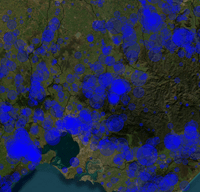Our Traditional Owner eDNA Training Program & Certification Program partners with Indigenous rangers to teach skills for eDNA water sampling on Country and interpretation of eDNA results. This program creates a unique opportunity to overlay eDNA data with traditional knowledge, adding an invaluable cultural perspective to scientific findings. We have partnerships across Australia to support First Nation-led environmental monitoring.
How can eDNA be used to survey on Country?
-
Establish biodiversity baselines. Gather biodiversity data to understand the distribution of species and measure ecosystem health.
-
Inform on-ground management. Conduct ongoing biodiversity monitoring to detect change over time, before and after disturbances (e.g., fire) and management interventions.
-
Aboriginal Waterway Assessments. An effective monitoring tool within Aboriginal Waterway Assessments to inform management decisions, such as cultural flows and ongoing monitoring.
eDNA & Citizen Science
We deliver innovative citizen science programs using eDNA. Sampling is safe, simple and easy to learn. These tools open the door for communities to connect with local ecosystems and help guide restoration activities. We have designed programs for community groups, schools and organisations to deliver tailored programs based on a range of community or social objectives.
Case studies
Baseline Data for the Budj Bim Cultural Landscape
The Budj Bim landscape is located on Gunditjmara Country and is extremely culturally significant. This landscape is home to a range of native and threatened species. An extensive biodiversity survey was undertaken in a quick and cost-effective way using eDNA. Outcomes delivered baseline data to assist in future management and planning.
Discovering Nature Through eDNA: Students Dive Into Local Ecosystems
Through hands-on field sampling and learning activities, students explored their local ecosystems, deepening their understanding of genetic science, biodiversity and conservation. This program funded by the Victorian Junior Landcare grants helped raise awareness of local environments and the importance of on-ground conservation efforts.






